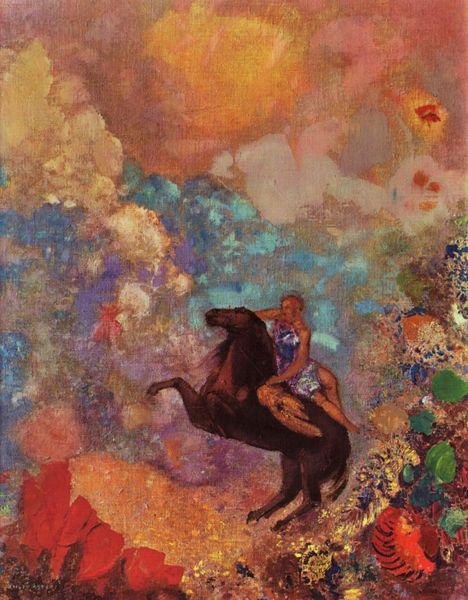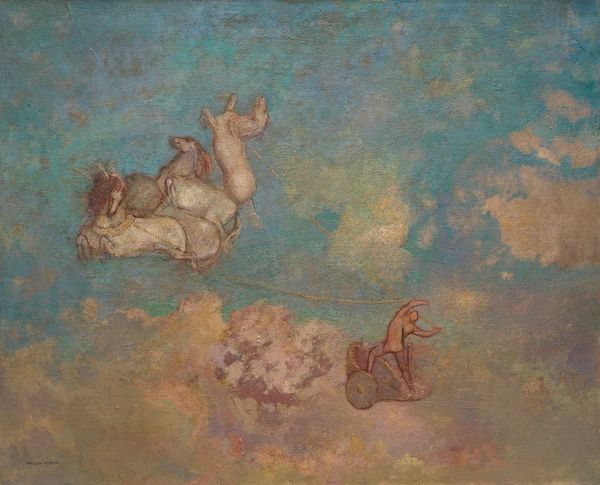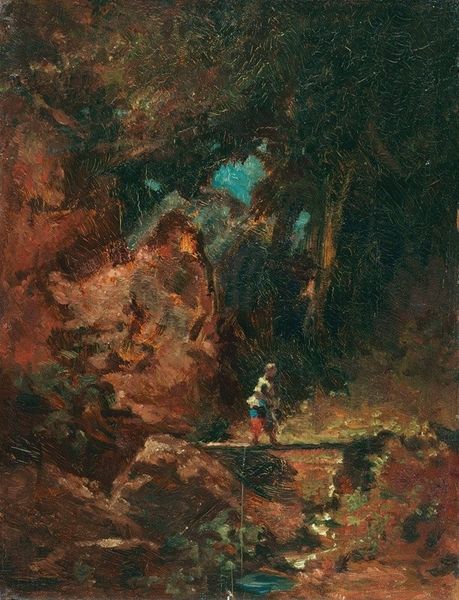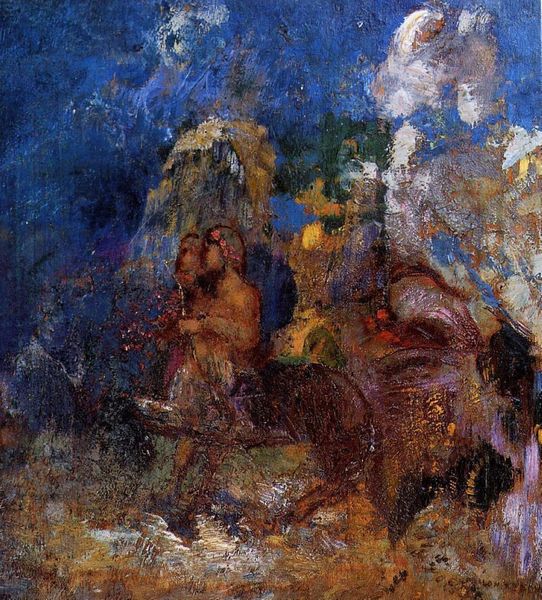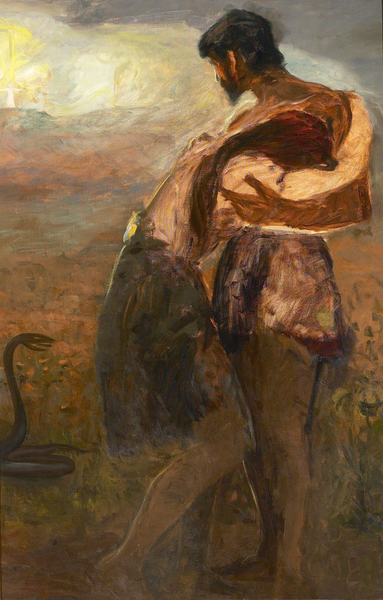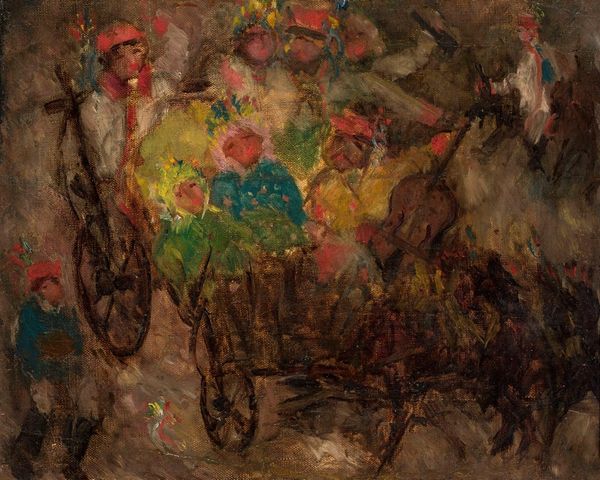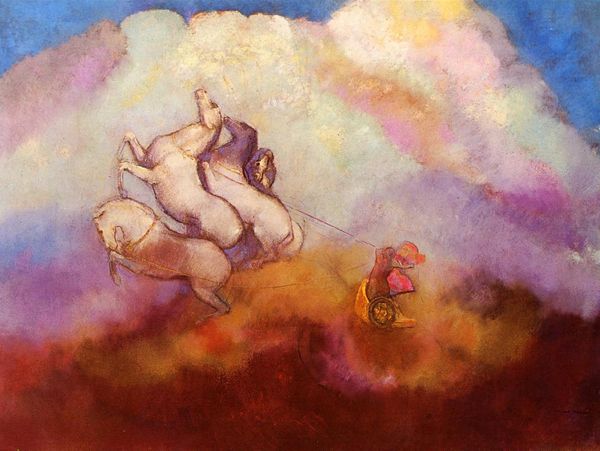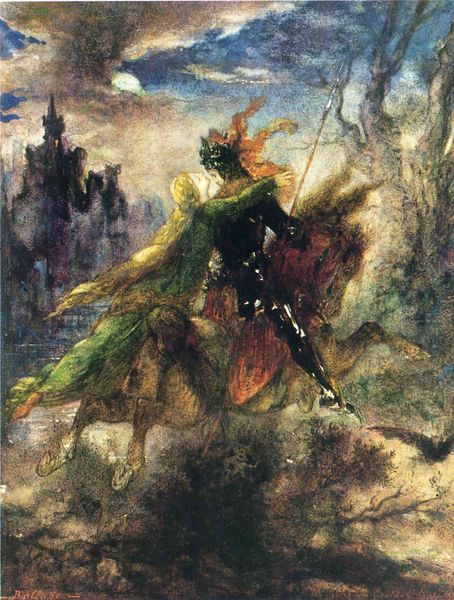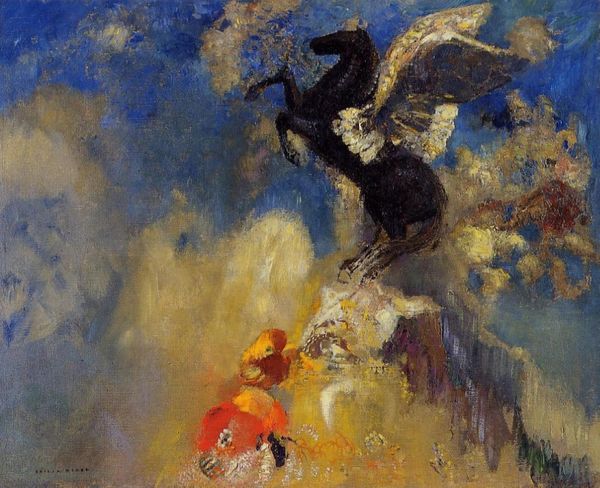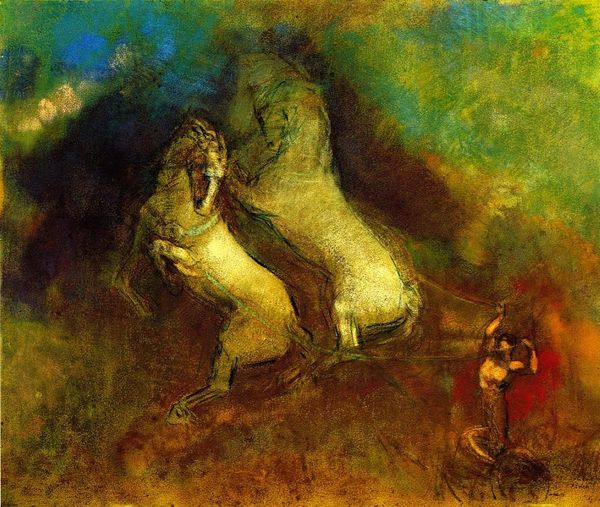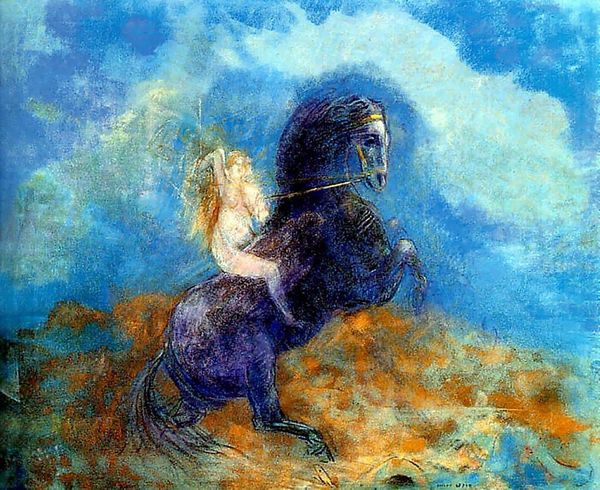
painting, pastel
#
painting
#
landscape
#
figuration
#
oil painting
#
horse
#
symbolism
#
pastel
#
erotic-art
Copyright: Public domain
Curator: We're looking at Odilon Redon's "The Green Horseman" from 1904, an oil painting whose current home is in a private collection. Editor: The scene gives off a strange, dreamy mood. The green rider seems almost unreal against that tempestuous sky. What do you make of the color choices? Curator: I find Redon's application of color to be exceptionally innovative. The juxtaposition of the verdant figure with the ochre landscape and cerulean sky creates a disorienting, dreamlike space. Notice, too, how line operates here; the forms seem almost to dissolve, lacking clear definition. Editor: Dissolving is the right word. Considering its time, would an audience interpret this as fantastical escapism or as social commentary? Perhaps an unveiling of hidden societal desires, given the prominent rider? Curator: It’s less about unveiling something within society and more about exploring Redon’s subjective psychology through the use of symbols. Take, for example, the rearing horse. What meaning do we assign this? Editor: Hmm... I imagine the rearing horse could be power—social and masculine power on display. But that may just be a surface read and my own interpretive desires. Does it recall the equestrian statues celebrating war victories common in that era? I'd assume the "Green Horseman" has some conversation with power and status? Curator: Possibly, but I urge caution to immediately extrapolate a one-to-one reading with, say, grand narratives of militarism. While these forces would've naturally shaped Redon and his context, "The Green Horseman" moves more in the direction of expressing, if not the "irrational," certainly that which escapes easy codification. Think less about obvious societal readings. The very composition speaks to the flattening of spatial depth; everything is equally presented. The horse, landscape and sky appear interwoven. Editor: Still, the "Horseman," especially in that era, can’t help but signal privilege. Even a symbolic painting exists within socio-historical context. Can one extract it fully and only consider its structure? Curator: It is indeed within history. And I understand why this leads to those questions, and even if the socio-historical informs Redon's painting, I find that we should investigate formal attributes and internal relationships, perhaps through psychoanalytic approaches. Editor: Maybe we can look deeper into Redon’s inner turmoil and find that green equestrian of privilege is simply a self-portrait of repressed class guilt. Curator: A fertile interpretation! I encourage listeners to return to the painting's internal elements as you consider potential meanings.
Comments
No comments
Be the first to comment and join the conversation on the ultimate creative platform.

